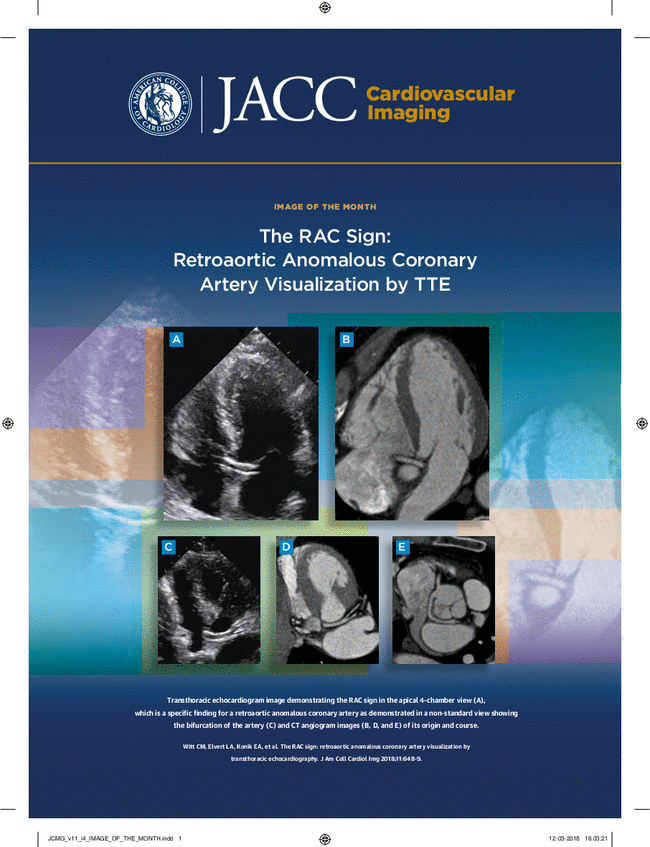通用深度学习衰减校正提高SPECT MPI的诊断准确性:一项多中心研究。
IF 15.2
1区 医学
Q1 CARDIAC & CARDIOVASCULAR SYSTEMS
引用次数: 0
摘要
背景:单光子发射计算机断层扫描(SPECT)心肌灌注成像(MPI)使用基于计算机断层扫描(CT)的衰减校正(AC)来提高诊断准确性。深度学习(Deep learning, DL)有可能生成合成的交流图像,作为基于ct的交流的替代方案。目的本研究评估DL生成的合成SPECT图像是否可以提高传统SPECT MPI的准确性。研究人员在来自4个地点的4,894名患者的多中心队列中开发了DL模型,以生成模拟SPECT AC图像(DeepAC)。在一项临床试验中,来自72个地点的746名患者对该模型进行了外部验证(一项评估氟吡达f18注射液在CAD患者中的PET成像的3期多中心研究;NCT01347710)和320例来自其他外部部位的患者。在第一个外部队列中,该研究评估了阻塞性冠状动脉疾病(CAD)的诊断准确性(定义为左主干冠状动脉狭窄≥50%或其他血管≥70%),用于总灌注缺陷(TPD)。在后者中,研究完成了变化分析,并将AC、DeepAC和非衰减校正(NC)的定量评分与临床评分进行了比较。结果第一个外部队列(平均年龄63±9.5岁;男性69.0%),梗阻性CAD 206例(27.6%)。DeepAC TPD的受者-工作特征曲线下面积(AUC)为0.77;95% CI: 0.73-0.81)高于NC TPD (AUC: 0.73;95% ci: 0.69-0.77;P < 0.001)。在第二个外部队列中,与NC相比,DeepAC定量评分与实际AC评分更接近。结论在一个多中心外部队列中,DeepAC提高了对阻塞性CAD的预测性能。这种方法可以提高使用传统SPECT系统的设施的诊断准确性,而不需要额外的设备、成像时间或辐射暴露。本文章由计算机程序翻译,如有差异,请以英文原文为准。
General Purpose Deep Learning Attenuation Correction Improves Diagnostic Accuracy of SPECT MPI: A Multicenter Study.
BACKGROUND
Single-photon emission computed tomography (SPECT) myocardial perfusion imaging (MPI) uses computed tomography (CT)-based attenuation correction (AC) to improve diagnostic accuracy. Deep learning (DL) has the potential to generate synthetic AC images, as an alternative to CT-based AC.
OBJECTIVES
This study evaluated whether DL-generated synthetic SPECT images could enhance accuracy of conventional SPECT MPI.
METHODS
Study investigators developed a DL model in a multicenter cohort of 4,894 patients from 4 sites to generate simulated SPECT AC images (DeepAC). The model was externally validated in 746 patients from 72 sites in a clinical trial (A Phase 3 Multicenter Study to Assess PET Imaging of Flurpiridaz F 18 Injection in Patients With CAD; NCT01347710) and in 320 patients from another external site. In the first external cohort, the study assessed the diagnostic accuracy for obstructive coronary artery disease (CAD)-defined as left main coronary artery stenosis ≥50% or ≥70% in other vessels-for total perfusion deficit (TPD). In the latter, the study completed change analysis and compared quantitative scores for AC, DeepAC, and nonattenuation correction (NC) with clinical scores.
RESULTS
In the first external cohort (mean age, 63 ± 9.5 years; 69.0% male), 206 patients (27.6%) had obstructive CAD. The area under the receiver-operating characteristic curve (AUC) of DeepAC TPD (0.77; 95% CI: 0.73-0.81) was higher than the NC TPD (AUC: 0.73; 95% CI: 0.69-0.77; P < 0.001). In the second external cohort, DeepAC quantitative scores had closer agreement with actual AC scores compared with NC.
CONCLUSIONS
In a multicenter external cohort, DeepAC improved prediction performance for obstructive CAD. This approach could enhance diagnostic accuracy in facilities using conventional SPECT systems without requiring additional equipment, imaging time, or radiation exposure.
求助全文
通过发布文献求助,成功后即可免费获取论文全文。
去求助
来源期刊

JACC. Cardiovascular imaging
CARDIAC & CARDIOVASCULAR SYSTEMS-RADIOLOGY, NUCLEAR MEDICINE & MEDICAL IMAGING
CiteScore
24.90
自引率
5.70%
发文量
330
审稿时长
4-8 weeks
期刊介绍:
JACC: Cardiovascular Imaging, part of the prestigious Journal of the American College of Cardiology (JACC) family, offers readers a comprehensive perspective on all aspects of cardiovascular imaging. This specialist journal covers original clinical research on both non-invasive and invasive imaging techniques, including echocardiography, CT, CMR, nuclear, optical imaging, and cine-angiography.
JACC. Cardiovascular imaging highlights advances in basic science and molecular imaging that are expected to significantly impact clinical practice in the next decade. This influence encompasses improvements in diagnostic performance, enhanced understanding of the pathogenetic basis of diseases, and advancements in therapy.
In addition to cutting-edge research,the content of JACC: Cardiovascular Imaging emphasizes practical aspects for the practicing cardiologist, including advocacy and practice management.The journal also features state-of-the-art reviews, ensuring a well-rounded and insightful resource for professionals in the field of cardiovascular imaging.
 求助内容:
求助内容: 应助结果提醒方式:
应助结果提醒方式:


